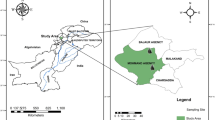Summary.
Background: Ilex paraguariensis St. Hilaire (Aquifoliaceae) (“Mate” or “Yerba mate”) is one of the most commercialized plants of South America which grows naturally in NE Argentina, Uruguay, SE Brazil and E Paraguay, where it is also cultivated. It is used to prepare a tea-like beverage (infusions or decoctions) appreciated for its peculiar flavor, stimulation and nutritional properties. Ilex brevicuspis Reisseck grows in the same habitat and is widely used as a substitute or adulterant of Ilex paraguariensis. In a previous work, methylxanthines (caffeine, theobromine and theophylline) were not detected in it by HPLC. Aim of the study: This study was undertaken in order to isolate, identify and quantify the polyphenolic compounds (caffeoyl derivatives and flavonoids) and to investigate some of the pharmacological activities of I. brevicuspis, related with the traditional use of the “Mate” (choleretic, intestinal propulsion and antioxidant activities). Acute toxicity was also investigated. Methods: Decoctions, like extracts, were prepared in order to compare the results with preparations commonly used by the local people. For the phytochemical analysis, the extracts were analyzed by HPLC with a diode array detector. Choleretic and intestinal propulsion activities were assayed in rats. Sodium dehydrocholate (DHC) was used as a choleretic reference standard. Antioxidant activity was tested in liposomes that were oxidized by the free radical generator 2,2'-azobis [amidinopropane] chloride (AAPH). Results: For the first time in I. brevicuspis the following compounds were isolated and quantified: A) caffeoyl derivative compounds (chlorogenic acid; caffeic acid; 3,4-dicaffeoylquinic acid; 3,5-dicaffeoylquinic acid and 4,5-dicaffeoylquinic acid. B) flavonoids (rutin, quercetin and kaempferol). Biological activity assays demonstrated that I. brevicuspis extracts produced a significant increase of bile flow (BF) in rats in the first 30 min period and in the percentage of BF increase accumulated at 120 min. It also produced an increase in the intestinal propulsion activity. Moreover, this species showed a high antioxidant activity. The acute toxicity test showed that Ilex brevicuspis did not produce any sign of toxicity at the analyzed doses. Conclusions: An Argentinean Ilex specie (I. brevicuspis) has choleretic, intestinal propulsion, antioxidant activities and these results may lead to the potential development of a new “Yerba Mate” and/or phytopharmaceutical products, without central nervous system (CNS) stimulant activity.
Similar content being viewed by others
Author information
Authors and Affiliations
Additional information
Received: 10 July 2002, Accepted: 5 November 2002
Correspondence to: R. Filip
Rights and permissions
About this article
Cite this article
Filip, R., Ferraro, G. Researching on new species of “Mate”: Ilex brevicuspis . Eur J Nutr 42, 50–54 (2003). https://doi.org/10.1007/s00394-003-0399-1
Issue Date:
DOI: https://doi.org/10.1007/s00394-003-0399-1




